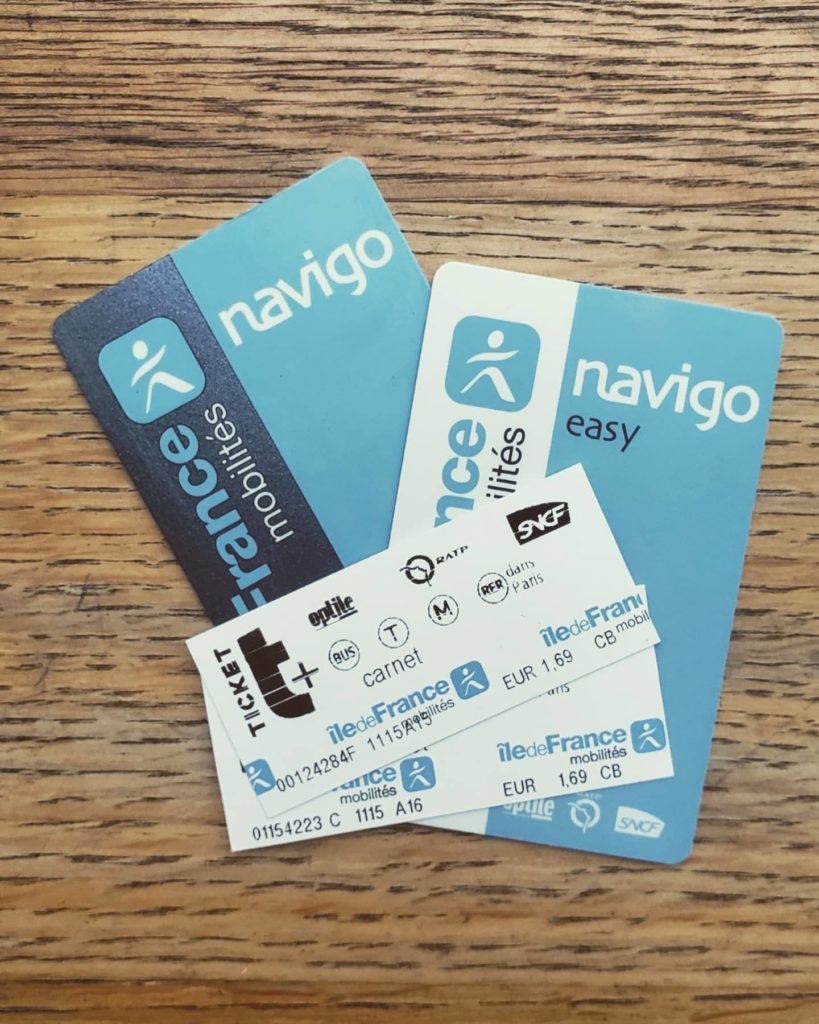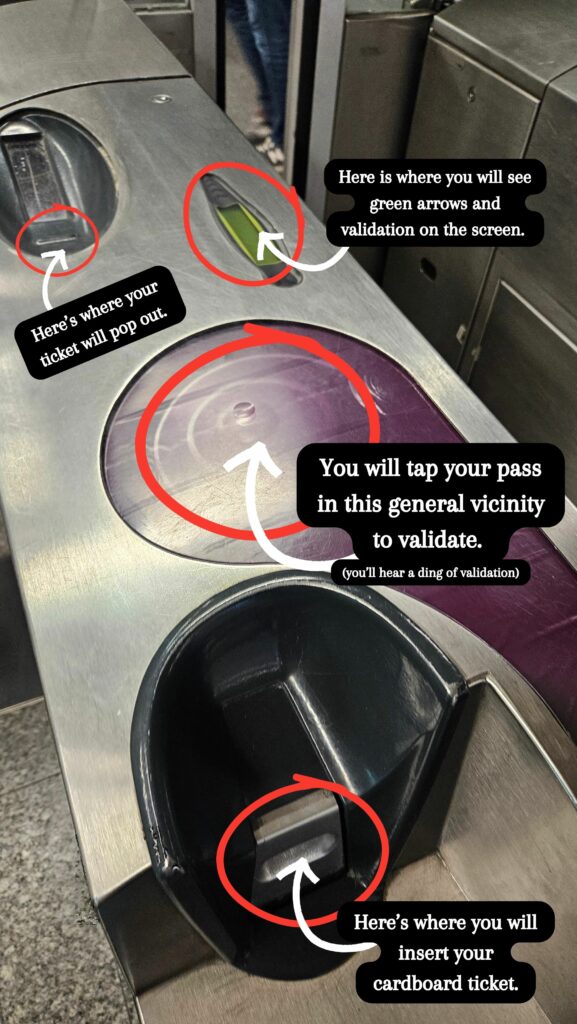Navigating Paris Public Transportation: A Complete Guide to Tickets

Paris, the City of Light, is known for its iconic landmarks, rich history, and vibrant culture. Whether you’re a tourist or a resident, getting around the city efficiently is essential to making the most of your time here. The Paris public transportation system, operated by RATP (Régie Autonome des Transports Parisiens), is extensive and user-friendly, but understanding how to use it effectively can be a bit overwhelming at first.
This comprehensive guide will walk you through everything you need to know about Paris public transportation tickets—from choosing the right type to buying and using them, handling emergencies, and dealing with RATP agents and potential scammers.
A note for those of you visiting : Do your research on how you will be getting around the city and where all you will be visiting while you’re in town. I cannot say this enough but, I highly recommend that you look into getting a reloadable pass. Check your phone to see if it is compatible for reloading the pass through the IDF Mobilités application. You can find all the information here (webpage in French, will need to use translating plugin).
Table of Contents
Types of Tickets
Paris offers a variety of ticket options to suit different travel needs. From single-use tickets to passes for unlimited travel, knowing which one to choose can save you time and money. We’ll explore the most common ticket types, including the T+ ticket, Navigo Pass, Paris Visite Pass, and contactless options.
The types of passes that are not covered in this section are as follows:
- ImagineR student/ ImagineR scholar
- ImagineR Junior
- Solidatiry 75%
- Free Solidarity
- Navigo Young Adult weekend
- 50% reduction while on State medical aide
- Navigo Senior (annual)
- Amethyst Navigo
- Carte Scol’R
- Young Adult Internship
- Antipollution
- Bus for students
- Civil Service volunteer
- Handicap and handicap aide
- Fête de la Musique
Let’s break down each option to see which best suits your needs.
As of January 1, 2025, the Ticket t+ has been phased out and replaced transportation-type specific tickets. There are no longer any zones within the IDF region, and the price for these tickets is valid throughout all of Île-de-France. If you have previously purchased t+ tickets, they are still valid and usable through the end of 2025.
Metro-Train-RER tickets (previously Ticket t+)
This one-time use ticket is valid for journeys on metro, RER, suburban train, funicular, and express tram (T11, T12, T13 and T14), within a two-hour limit, and without leaving the network. You can load your ticket on your Navigo pass (preloadable and purchased from automatic distributor or service counter) or your smart device. Although you cannot have this ticket in conjunction with any previous Ticket t+ or Paris region <> Airport tickets.
You can make as many changes as necessary, up to 2 hours after validating your ticket. But once you have exited the network (meaning walking through the exit turnstiles or automatic doors, you cannot enter back in on the same ticket, you will need a new, unvalidated ticket. You can not also exit the bus and get back on the same bus line, this is considered an interruption to your travel and does not count.
An individual ticket costs 2,50€. Children up to the age of 4 ride for free, children between the age of 4 and 10 years old can get a reduced price for their tickets.
To check to see what ticket you will need for your travels and how much it will cost, you can check out here.
Bus-Tram tickets (previously Ticket t+)
This ticket is a one time use ticket and is valid for journeys on the bus (excluding Roissybus), tram (excluding T11, T12, T13 and T14), Noctilien, Filéo, Tzen and C1 lines within a 90-minute limit. While connections are allowed, journeys cannot be interrupted and resumed on the same line, and return trips are not allowed. You can load your tickets onto your Navigo Easy pass or any smart device.
An individual ticket costs 2€. Children up to the age of 4 ride for free, children between the age of 4 and 10 years old can get a reduced price for their ticket with proof of age.
Airport Ticket
Getting from the airport into the city requires its own unique ticket, neither the metro-RER-train or bus-tram tickets are usable. This ticket can be used for getting to/from any destination in Île-de-France region to Orly or Roissy-Charles de Gaulle. You can also use this ticket to travel between airports. This ticket is only available on the rail network, so Orlyval is included but not the Roissy Bus.
The price of this ticket is 13€. This ticket is valid for two hours on metro, RER, suburban train, Orlyval, and express tram (T11, T12, T13 and T14) lines. Connections are allowed, but you must not leave the network. It cannot be loaded onto a pass or smart device with a t+ ticket or metro-RER-train ticket already in place. This ticket can be loaded onto your Navigo pass or smart device. It is best to purchase your metro-RER-train tickets once you have used the airport ticket.
Passes
Paris Visite
This is a pass that can be for 1, 2, 3 or 5 days and can be loaded onto your Navigo Easy pass or any smart device. If you choose to upload it to your Easy pass, you must write your full name on the back of the card for it to be valid. This pass is personalized and non-transferable. You have access to use all modes of public transportation; metro, RER, bus, train, tram in the Paris and Île-de-France region. You can also use this pass to go to the Paris airports, Orlyval, Disneyland Paris & the Palaces of Versailles.
The price is as follows for each format:
- 1 day – 29,90€
- 2 days – 44,45€
- 3 days – 62,30
- 5 days – 76,25€
Navigo Easy Pass
This is a specific type of card that allows you to have several different types of passes on it. This is perfect for someone who is an infrequent traveller or tourist. This card initially costs 2€ and is reloadable either through the applications, at a ticket window with an agent or at an automatic distributor. This card is non-personal and can be lent or transferred. If you are looking to buy and use this pass, you will need to go in-person to a ticket window and speak with an agent.
The following tickets are available to be stored on the Navigo Easy Pass:
- Metro-RER-Train ticket
- Bus-Tram ticket
- Navigo Day
- Paris <>Airport
- Orlybus and RoissyBus
- Paris Visite pass
- Fête de la musique
- Antipollution
Navigo Découverte Pass
This is another specific type of reloadable card that can hold several different types of ticket and/or passes. This pass is geared more towards the traveller or tourist who makes more frequent trips during a short period of time. This card, unlike the Navigo Easy, is personal to the cardholder; it requires a photo and first and last name and the signature of the person. It costs 5€ to purchase the card (plus the cost of the pass to put on the card).
The following tickets are available on the Navigo Découverte pass:
- Navigo Day Pass
- Navigo Week Pass
- Navigo Month Pass
- Antipollution
- Fête de la musique
Navigo Liberté + Pass
This card is a pay-as-you-go pass where you pay only for the trips that you make within Paris. This card is treated the same as the others, where you will validate it as normal and at the end of the month, you will be billed for the collection of the trips you made for that month. You will need to provide your bank information when setting up the account as it will automatically be deducted from it.
The price per trip is 1,99€ for metro, train, RER and funicular. The price per trip on the bus and tram is 1,60€. The price for the airport lines and the RoissyBus is 13€. On any given day, you can be billed up to a maximum of 12€, excluding airport trips. Beyond that, your journeys are considered free.
You can travel for 2 hours on the metro, RER and train networks and for 90 minutes (from the last validation) on the bus and tram networks. You can now have your Liberté+ on your Navigo pass or your smartphone. If you decide to have it on both, it will be 2 different contracts, so be careful to not use both formats for one journey, it essentially defeats the purpose.
You can sign-up in a dedicated information station (not every ticket counter can sell these contracts). You will need your RIB and id.
Navigo Day Pass
This day pass is valid for an unlimited number of usees during a 24-hour time period. You can travel on all modes of transport in the IDF region: metro, RER, bus, tramway and train – with the exception of the Orlyval line, SNCF reservation lines and Optile special fare lines. The Day pass can be bought for 12€ the day of or up to 6 days in advance. The Day pass can be purchased and stored on the Navigo Pass, the Navigo Pass Découverte, the Navigo Pass Easy, and through the mobile app.
Navigo Week Pass
With the Navigo Week pass, you have unlimited travel in the zones of your choice. You can use all modes of transport in the Paris region: metro, RER, bus, tramway and train (with the exception of the Orlyval line). This pass can be purchased for 2 zones or for all 5 zones. The pass is valid starting on Monday at midnight through Sunday 11:59 PM. You can purchase the pass starting on the Friday before the following week starts. The Navigo Week pass can be purchased and stored on The Navigo Pass, the Navigo Découverte pass and through the mobile apps.
The price schedule is as following:
- All zones – 31,60€
- Zones 2 to 3 – 29,60€
- Zones 3 to 4 – 28,60€
- Zones 4 to 5 – 28,20€
Navigo Monthly Pass
With the Navigo Month pass, this gives you unlimited travel in the zones of your choice. You can use all modes of transport in IDF region from the metro, RER, bus, tramway to the train (with the exception of the Orlyval line).
With the 2 zone pass (2-3, 3-4 and 4-5), you have access to the zones you have chosen. You also get unlimited free travel in all zones on weekends (Saturday from 12 AM to Sunday until 11:59 PM), public national holidays (from 12 AM to 11:59 PM), during zone C short school vacations (All Saints, Christmas, winter and spring), from 12 AM on the day after school ends to 11:59 PM on the day before school resumes, as defined by the French Ministry of Education, and in during the summer period from July 15 at 12 AM to August 15 at 11:59 PM.
The prices are as follows for the Navigo Month Pass :
- Zones 1 – 5 : 88,80€
- Zones 2 – 3 : 82,80€
- Zones 3 – 4 : 80,60€
- Zones 4 – 5 : 78,60€
The purchase of the Navigo Month pass starts on the 20th of the previous month and goes to the 19th of the current month. It is valid from the 1st day to the last day of the month (regardless if there are 30 or 31 days). It is not based on the purchase date of the ticket.
One perk of the Navigo Month Pass is that it allows you to have access to price reductions or exclusive services available all year round. This includes over 300 cultural outings (includes, but not limited to cinema, theatre, circus, museum and heritage, music, garden, art center, and many more) throughout the Paris region. You can find the full list of advantages here.
Where to buy tickets
Purchasing tickets is straightforward, but knowing where to get them can make your journey smoother. We’ll cover the best places to buy your tickets, such as ticket machines, RATP sales offices, convenience stores, and online options.
You have several options on where to purchase your tickets/passes. You can check here for a handy map of all the places to buy a ticket or pass. For some of the passes indicated above, there is a fee that you will need to pay for the card itself. If you have chosen one of these passes, you will need to go to a ticket window in a metro/train station to pick up the card. You can also load the card at this time.
Once you have your pass, you will be able to reload it in several different capacities. The easiest and quickest (read less painful) way to reload your pass is with the IDF Mobilités applcation . Honestly, if you can do this, I highly recommend it !
If you are unable to, you can always do so the old-fashioned way : at the ticket window or at the automatic distributor. If you are reloading/purchasing this way, please allow for extra time. There are some stations that will always have a line regardless of time of day. Please be aware that on the last day of the month and the first day of the month can be swamped with people as this is when the monthly pass needs to be reloaded.
If you are purchasing a ticket that has a reduced fare, please be sure to know the requirements to justify the purchase.
How they work
Using your ticket correctly ensures a hassle-free travel experience. We’ll explain how to validate your ticket, transfer between different modes of transportation, and understand the zone system to avoid fines.
If you’re using cardboard ticket, you’ll feed the ticket through the turnstile and it will pop up on the other side (should be stamped and validated) and you should be able to walk through to the other side.
PRO TIP: You’ll want to keep this ticket on you at all times until you exit the public transportation (whether metro, RER, bus, tram, etc..). This is proof of your travel and if you are stopped and controlled, you will be asked for this ticket.
You’ll want to make sure that when your ticket pops up, there is a green light on the screen panel and you’ll want to collect your ticket and move through the turnstile. Do not wait for it to move for you. You have a limited amount of time before you will not be able to move through the turnstile. Make sure to check the screen located on the top of the turnstile to make sure the ticket/pass was accepted. You’ll see a green arrow light. (See photo below for explanation)
If you are using a reloadable pass or a pass on your cellphone, you’ll “tap” your card on the indicated area on the top of the turnstile and proceed the same way. The turnstile will act the same way as if you were passing with a cardboard ticket. Read below for more information on what to do when stopped by an RATP agent.
See video below :

Technology across the entire public transportation system may slightly differ from one to the next. There may be tradition turnstiles, automated plexiglass doors that open away from you or the slide into the barrier on the side. But they all work o the same concept: you valid your transportation ticket or pass, you walk through an open gate, and you go no your merry way.
Another reason to keep your ticket, if using the cardboard tickets… you may need it to get out of the station. This is true when it comes to using the RER or the Transilian train. You will need a ticket both to enter the station and to leave it.
In case of emergency
Emergencies can happen anytime, and being prepared is crucial. This section will provide tips on what to do if you lose your ticket, encounter issues with ticket machines, or face other unexpected situations.
If a cardboard ticket that has not been validated will not let you through, it could most likely be demagnetized and you will need to see an RATP agent at a ticket window (or use the call box if there is not ticket window at the station) and have them issue a new ticket .
If your reloadable pass does not work, you will need to do the same thing, see an agent.
If you loose something while traveling on public transportation, it is best to immediately seek help from an agent at the nearest ticket window. If you are on the metro (RATP), you can make an online declaration here. If you are on the RER or train (SNCF) you can make an online declaration here. If you are on the bus, you can check here for the following declaration options.
If you come across someone who is causing you problems or you’ve witnessed something that needs attention of the authorities, you’ve got several options :
- Call 3117
- Send a text to 31177 stating “SOS”
- 3117 Alerte application : can be done in discretion no matter where you are at in the RATP or SNCF network.
- Paris Transportation 2024 application : there will
- Call box within a public transportation station: throughout metro and train stations there are call boxes where you can ring for help if there is not an agent around. There will be someone available to help you through whatever the situation is.
Dealing with RATP agents
If you’re stopped by an RATP agent, it’s important to know what to expect. We’ll guide you through the inspection process, the importance of carrying a valid ticket, and how to handle any disputes that may arise.
I cannot express this enough, but if you are using cardboard tickets, you will need to keep them for the entire duration of the trip you are on. Once you exit the station and you are done traveling for the moment, you can then throw away your ticket. This is necessary as proof that you paid for your trip.
Do not compare the Paris public transportation system and how it works to other cities’ systems. Each have their own specific set of rules and regulations and it is up to you (especially as a visitor) to educate yourself in how the process works.
Yes, there are times when agents can be more a nuisance than help. Dealing with the general public that has a decent amount of foreigners visiting from all corners of the world, can be very exhausting and tiring. This is coming from personal experience of dealing with international clients on a daily basis in the public service sector (I work in food service if you didn’t know that).
Now, I am not defending the behaviour of all RATP agents, some I have seen be very pushy to the point where it seems unprofessional, but I’m saying be respectful and courteous.
Spotting Scammers
Unfortunately, scammers can be a part of city life. Learn how to identify common scams related to public transportation and how to protect yourself from fraud. The biggest being buying tickets from vendors outside stations. You’ll never want to buy any sort of ticket from someone who approaches you. You can only buy tickets in the following manner:
- On your phone through the Bonjour RATP or IDF Mobilités applications.
- From an automatic distributor
- From an agent at the official ticket window in a metro or train station.
If you have questions about which ticket you should buy, I would recommend going directly to the ticket window and speaking with the agent on duty. They will be able to help you and direct you in the right direction. Most agents will be in some type of uniform, whether it is with the RATP (dark green with a sea green accent) or the SNCF (navy blue and red). They’ll most likely have a name tag or some sort of badge as well as a possible vest that indicates RATP or SNCF.

You May Also Like

RATP ticket price update for 2023
4 January 2023
Navigating a transportation strike when in Paris
21 February 2023
One Comment
Pingback: